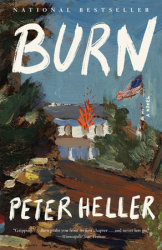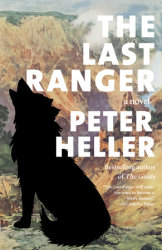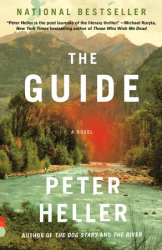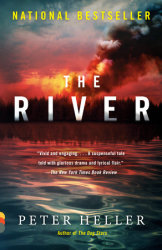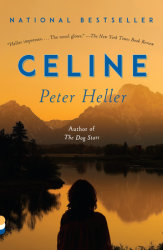Peter Heller’s new novel, The Painter, is not what I expected. I haven’t read his critically acclaimed first novel, The Dog Stars, and so I came to his prose with fresh eyes and, given the book’s description, expectations of a thriller of the subtle and literary sort. The first few sentences of his prologue pulled me down, hard, into the lap of a gorgeously written book and I was hooked. The Painter is the story of Jim Stegner – fisherman, father, artist. Somewhat of a recluse, made more so following the death of his daughter and a run-in with the law, Jim gets himself entangled in a mess of a situation that involves poachers, murder, and the media. The story is relatively straightforward for a narrative as thrilling as this; what takes it from satisfying to brilliant is Heller’s writing. It’s like nothing this reader has ever read. I was lucky enough to catch up with Heller recently and came out of my prose-induced stupor long enough to ask him three questions.
PENGUIN RANDOM HOUSE: One of the biggest themes running through the current of your gorgeous new novel, The Painter, is this idea of public perception versus one’s self-awareness. For Jim Stegner, your protagonist, this is magnified. Jim is a private person but the success of his work – and the media coverage of the situations in which he becomes entangled – are painting a portrait of him for the public, one with which he struggles endlessly. As the author, did you struggle with your own perception of your main character throughout his development? Or did you know him inside and out the entire time?
PETER HELLER: It’s a great question and one which for me carries a bit of irony. I had no trouble perceiving what I think of as the essential Jim as he navigated his art, the media, and the personal challenges and threats that confronted him. I knew Jim to the core the moment he started speaking, started telling his story. But for me, as a writer who has had a public life both in magazine stories – which have always been first person narratives, and personal – as well as in books, the challenge is more acute. How much vulnerability does one allow? How much emotion? How much rage – especially at environmental stupidity? No easy answers.
PRH: The Painter is so rich in metaphor – both overt and subtle. The most consistent, of course, are the images that your protagonist paints onto canvas. In imagining his work, was there a real-life painter whose work inspired you in the creation of Jim?
PH: Jim Stegner is based wholly on my dear friend Jim Wagner, a well-known expressionist painter from Taos. Jim, the flesh and blood Jim, shot a man in a bar for making a comment about his child, and his son died in a drug deal at age fifteen. He moved up to the North Fork Valley in Colorado to get his life back together, and I met him there on the river and we became fast friends and fishing buddies. He taught me a lot about fly fishing. He looks exactly as described in the book, and every painting in the book I saw clearly in Jim’s hand, just as he would paint it. He is a brilliant, wonderful painter, and it was a great boon to be able to walk into the imagined world of his art.
PRH: As readers come to your novel, read and digest it, and move on to discuss it, what conversations do you hope your work inspires?
PH: I hope people talk about loss and its relationship to everything meaningful, and everything courageous, and everything we create.








